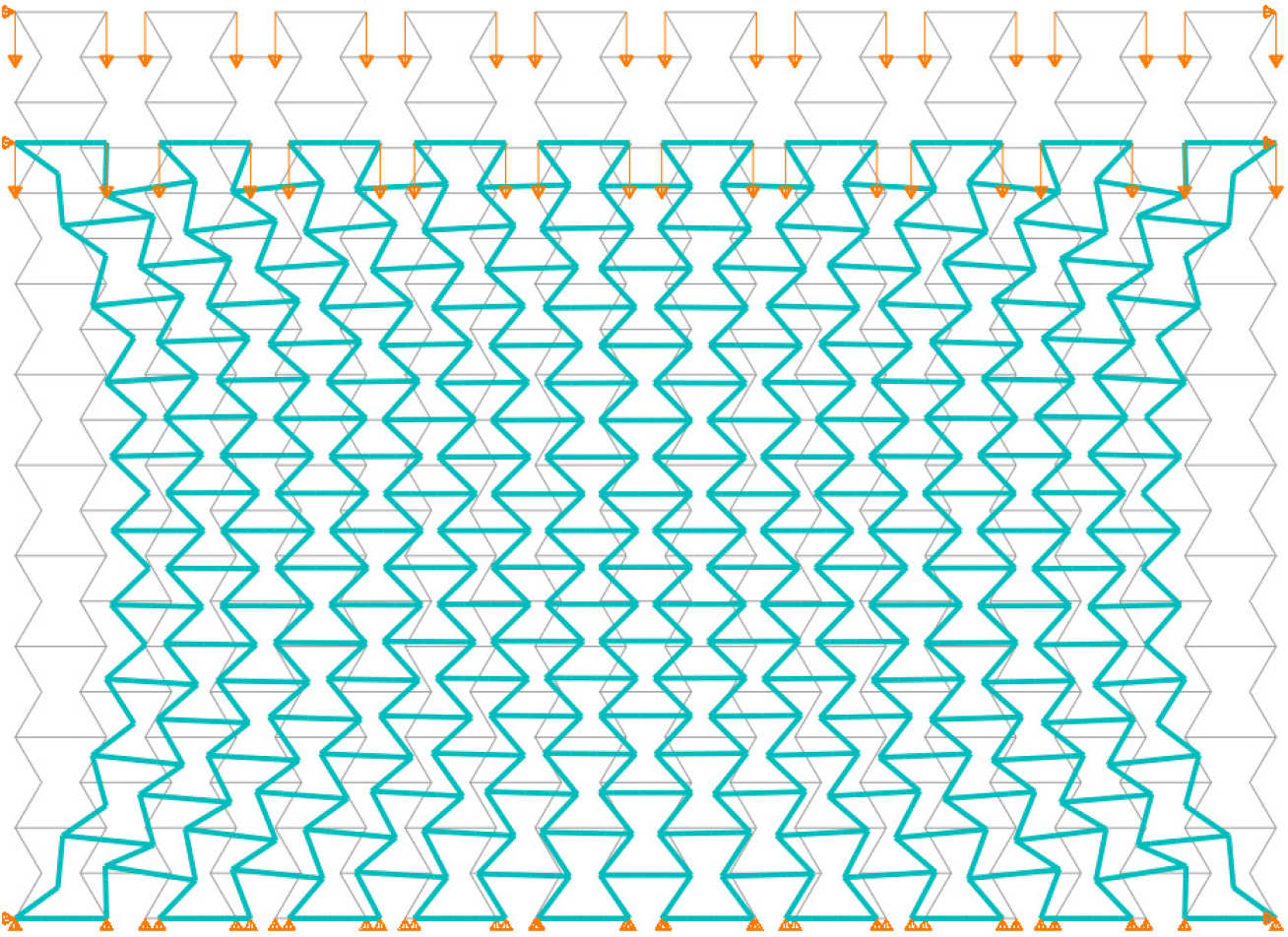Modelling of auxetic materials
The research aims to investigate the mechanical behavior and utilization of auxetic metamaterials within civil engineering infrastructure. Metamaterials are structures that exhibit unique characteristics due to alterations made at the microstructural level thus affecting the macrostructural behavior. In the case of auxetic metamaterials, these changes are made to the structure’s geometrical configurations. Auxetics have a negative Poisson’s ratio, i.e. they display lateral expansion upon longitudinal loading and contract in all directions when compressed. These characteristics make them very useful for various applications including impact resistance panels as the energy can be dissipated and re-directed outwards, biomedical uses when designing implants as well as for textiles and filtration systems.

The elastic deformation of auxetic structures under large deformations are explored, varying loading and boundary conditions. The load carrying capacity of these cellular structures is analyzed numerically using a finite element method approach and analytically through total potential energy formulation of a spring and link model. Initial work is done in 2D at a unit cell level to fully understand the deformation behaviour and then expanded to larger lattices. Further work will be carried out on 3D arrays and on hybrid (auxetic and conventional) cellular forms. Experimental test will also be carried out on 3D printed specimen to validate the numerical model.
Researchers
Adam Bekele
Dr Andrew Phillips
Prof Ahmer Wadee


